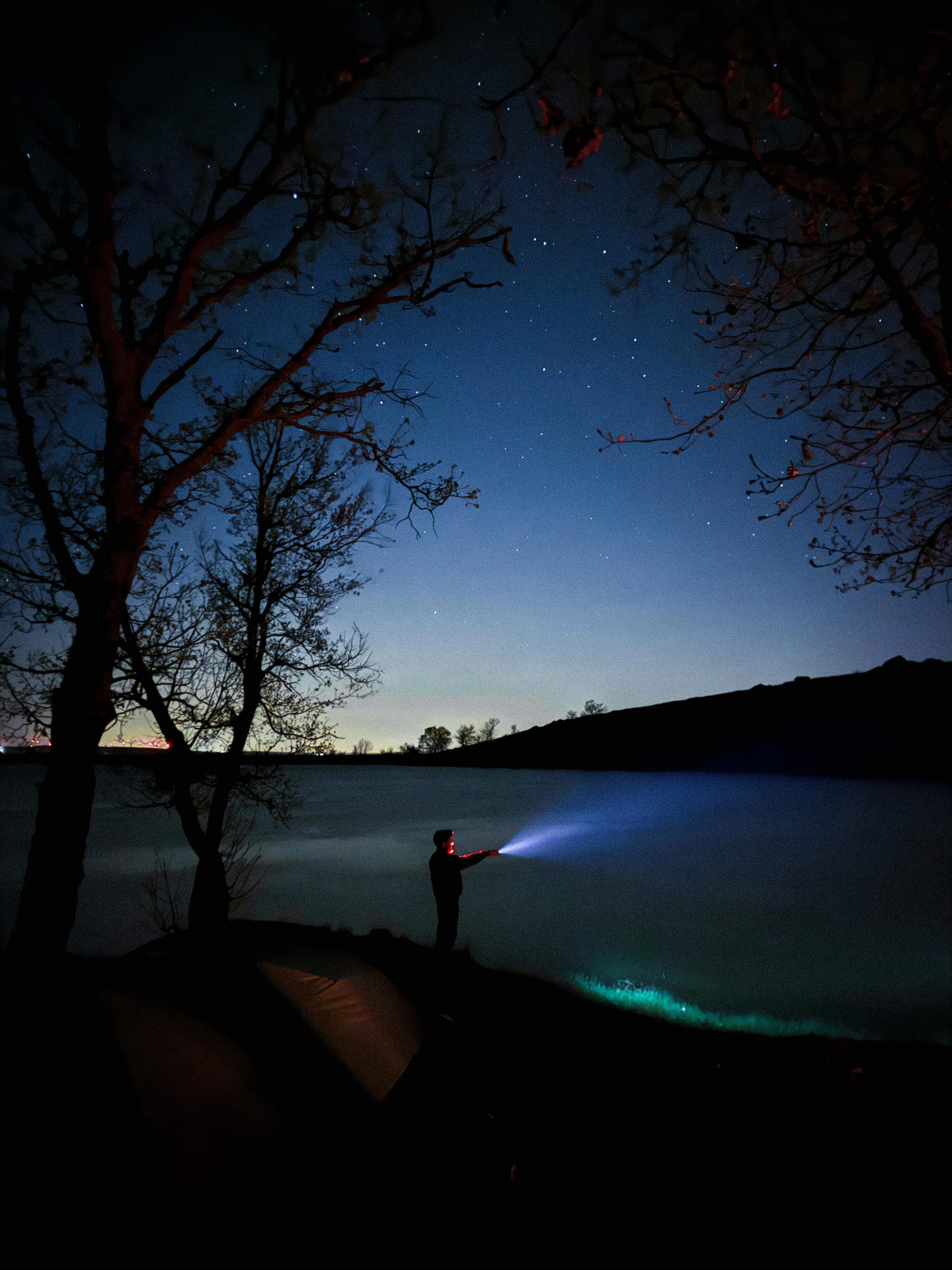How to Launch a Full Campaign in 7 Days (Without a Team of 10)

Zach Chmael
Head of Content
8 minutes
Don’t Feed the Algorithm
The algorithm never sleeps, but you don’t have to feed it — Join our weekly newsletter for real insights on AI, human creativity & marketing execution.
How to Launch a Full Campaign in 7 Days (Without a Team of 10 )
Guess what? Your competitor just shipped while you're still planning.
The minimum time to properly plan a multi-channel marketing campaign is typically 6 weeks, with full campaign development taking an average of 16+ weeks from ideation to launch. Yet 72% of companies haven't looked at their ad campaigns in over a month, and only 61% of marketers believe their marketing strategy is effective.
The math doesn't add up. More planning time isn't creating better campaigns—it's creating slower ones.
While marketing teams debate personas and perfect mood boards, savvy marketers using AI automation save an average of 25 hours per week and accelerate campaign deployment while reducing manual errors.
Speed is the new strategy.The most successful brands in 2025 aren't building bigger teams—they're building smarter systems that ship fast and iterate faster.
This is your blueprint for launching a complete campaign in 7 days, without the bloated processes, and with better results than teams 10x your size.
Day 1: Strategic Foundation (The 80/20 of Campaign Strategy )
Morning: Define Your Core Campaign Elements
Start with clarity, not complexity. According to APQC research, most campaigns fail because teams spend weeks on strategy refinement instead of focusing on the 20% of strategic decisions that drive 80% of results.
The Four Critical Questions:
What's the single outcome we're driving? (Not five goals—one primary metric)
Who exactly are we reaching? (Not demographics—specific pain points and behaviors)
What's our core message? (The one thing they should remember)
How will we measure success? (75% of marketers report increased ROI within a year of implementing automation)
Afternoon: Campaign Architecture & Channel Selection
Use the integrated approach that 94% of small businesses plan to increase their marketing spending on in 2024. Focus on 2-3 channels maximum—going wide dilutes impact.
The Modern Channel Stack:
Primary: Email ($42 return for every $1 spent)
Amplification: Paid social (28.8% of all ad spend)
Content Hub: SEO-optimized landing page (53% of all website traffic comes from organic search)
Don't overthink it. Companies implementing strategic consolidation achieve 50-77% cost reductions and dramatically improved team performance compared to those using scattered, disconnected tools.

Day 2: Content Creation Engine (AI-Powered, Human-Polished )
The New Content Creation Formula:
Traditional content creation follows a broken model: brainstorm → write → edit → revise → approve → publish. This process takes weeks and often produces mediocre results.
The speed-execution model flips this: AI drafts → Human strategy → Rapid iteration.
Morning: Core Content Assets
Campaign landing page (AI-generated structure, human-refined copy)
Email sequence (3-5 emails maximum—segmented campaigns drive 30% higher open rates)
Social media content (platform-specific adaptations)
Afternoon: Creative Multiplication 84% of marketers report AI speeds up high-quality content delivery, while human-generated content receives 5.44x more traffic than AI-generated content. The winning approach? AI for speed, humans for soul.
Use AI to create:
Multiple headline variations (A/B testing is critical—less than 20% of marketers use landing page A/B tests)
Platform-specific copy adaptations
First-draft email sequences
Social media post variations
Human refinement adds:
Brand voice consistency
Emotional resonance
Strategic messaging alignment
Quality control
Day 3: Technical Infrastructure & Automation Setup
Stop building Frankenstein tech stacks.
Marketing technology utilization plummeted from 58% in 2020 to just 33% in 2023—the lowest on record. The average enterprise manages 130+ applications with overlapping functionality, yet 44% of marketing SaaS licenses remain underutilized.
The Lean Campaign Stack:
Email Platform: Advanced automation with segmentation
Social Scheduler: Multi-platform posting with analytics
Landing Page Builder: Mobile-optimized with A/B testing
Analytics Hub: Campaign performance tracking
Companies using AI report 15-25% performance improvements when properly integrated into core processes, versus those maintaining disconnected systems.
Automation Workflows to Set Up:
Email drip sequences triggered by user behavior
Social media scheduling across optimal posting times
Lead capture and segmentation based on campaign interaction
Performance tracking dashboards with real-time alerts

Day 4: Expert Network Integration (The Secret Weapon )
Here's what separates fast-executing teams from slow ones: They don't try to be experts at everything. They bring in specialists when they need them.
80% of creative talent will use GenAI daily by 2026, but the highest-performing campaigns combine AI efficiency with human expertise. Rather than hiring full-time specialists (which takes months), smart teams use modular expert networks.
When to Bring in Specialists:
Paid Media: If ad spend > $5K, bring in a performance specialist
Creative: For visual-heavy campaigns, work with a designer who understands conversion
Copy: If messaging is complex, collaborate with a conversion copywriter
Analytics: For attribution modeling, use a data analyst
Companies using expert ecosystems report 40-75% time savings in sourcing and onboarding, with 75% first-candidate acceptance rates through AI-powered matching systems.
The traditional agency model is broken: 3-month contracts, 300-slide decks, and teams that don't understand your business. Expert networks provide vetted specialists who can integrate immediately, understand modern marketing, and deliver results in days, not quarters.
Day 5: Campaign Launch & Real-Time Optimization
Launch day isn't the end—it's the beginning. Marketing campaigns that use real-time optimization see 15-25% performance improvements compared to "set-and-forget" approaches.
Launch Sequence:
Morning: Email campaign activation
Midday: Social media content deployment
Afternoon: Paid campaign launch with micro-budgets for testing
The Optimization Loop: Traditional marketing waits weeks to optimize. Speed-execution marketing optimizes in hours.
Hour 2: Check email open rates, adjust subject lines for remaining sends
Hour 6: Review social engagement, amplify top-performing content
Hour 12: Analyze paid campaign performance, reallocate budget to winning audiences
Day 2: Optimize landing page based on conversion data
Amazon reduced cart abandonment by 25% within a month using AI-driven real-time retargeting. HubSpot achieved a 40% increase in click-through rates through AI-powered dynamic campaign adjustments.
Day 6: Performance Analysis & Iteration
Data without action isn't insight—it's noise. 87% of marketers report that data is their company's most under-utilized asset, largely because they collect everything but act on nothing.
The Metrics That Matter:
Email: Open rate, click-through rate, conversion rate by segment
Social: Engagement rate, click-through rate, cost per conversion
Paid: Cost per acquisition, return on ad spend, conversion rate by audience
Landing Page: Conversion rate, bounce rate, time on page
The 48-Hour Iteration Cycle:
Identify the lowest-performing element
Generate 3 alternative approaches (AI-assisted)
Test the most promising variation
Implement the winner
This approach beats traditional quarterly optimization cycles because real-time adjustments can reduce wasted spend and continuously enhance performance.
Day 7: Scale & Systematize
The goal isn't just to launch one campaign—it's to build a system that can launch campaigns consistently. Organized marketers are 674% more likely to achieve success than those using ad-hoc approaches.
Systematization Framework:
Campaign Templates: Reusable frameworks for future launches
Content Libraries: Successful copy/creative for adaptation
Process Documentation: What worked, what didn't, why
Expert Network: Relationships with specialists for rapid deployment
Scaling Indicators:
Can you brief a new campaign in under 2 hours?
Do you have templates for each content type?
Can you replicate successful campaigns for different audiences?
Is performance tracking automated?
The most successful teams don't just execute fast—they systematize speed. Companies using integrated marketing platforms achieve 32% higher revenue growth than those using disconnected approaches.

The Secret: It's Not About Working Harder
Traditional marketing operates on the assumption that more time equals better results. This is false.
Speed-execution marketing operates on a different principle: constraints drive creativity and speed forces clarity.
When you have 7 days instead of 7 weeks:
You focus on what actually matters
You eliminate perfectionism paralysis
You test real market response instead of internal opinions
You iterate based on data, not assumptions
The most successful brands in 2025 won't be the ones with the biggest teams or budgets—they'll be the ones who can move fastest from idea to market feedback.
Why This Works (And Why Most Teams Can't Do It )
Constraint creates clarity. When you have unlimited time, you overthink everything. When you have 7 days, you focus on the 20% that drives 80% of results.
Speed enables learning. It takes consumers 4-6 weeks to familiarize themselves with a brand, but companies with faster time-to-market capture up to 70% more market share than slower competitors.
Systems beat heroics. Individual brilliance can't scale. Systematic execution can. Teams using marketing automation report 50% faster campaign launches and 20-30% higher growth rates than manual processes.
Modern tools enable speed. AI marketing automation reduces manual tasks by 30-40%, while expert networks provide specialists within 48 hours versus traditional hiring timelines.
What Doesn't Work (The Speed Execution Anti-Patterns )
❌ Perfectionism: Waiting for the "perfect" strategy, copy, or creative
❌ Committee decisions: Requiring approval from 6+ stakeholders
❌ Tool bloat: Using 10+ disconnected platforms
❌ Generalist approach: Trying to be experts at everything internally
❌ Set-and-forget: Launching without optimization capability
✅ What works: Clarity over perfection, rapid iteration, integrated systems, specialist collaboration, continuous optimization.
The Averi Advantage: Speed Execution as a Service
This framework works, but it requires three critical elements most teams don't have:
AI-powered workflow orchestration that handles the busy work
Access to vetted marketing specialists when you need them
Integrated systems that eliminate tool chaos
Averi was built exactly for this: AI that simplifies rather than complicates, expert marketers when you need them, and unified workspace where execution is the default.
No chaos. No bloat. No burnout.
Just modern marketing that actually works—and ships in days, not quarters.
Implementation Checklist
Before You Start:
Clear campaign objective defined
Target audience pain points identified
Primary success metric established
Decision-maker authority confirmed
Day 1-2: Foundation
Strategic brief completed (4 core questions)
Channel stack selected (2-3 maximum)
Content requirements outlined
Expert needs assessed
Day 3-4: Creation
AI-assisted content drafted
Human refinement completed
Technical infrastructure configured
Specialist collaboration initiated
Day 5-7: Launch & Optimize
Campaign activated across channels
Real-time monitoring established
Optimization cycles implemented
Performance documentation created
The goal isn't perfection—it's momentum.
Companies implementing execution-first approaches achieve 15-25% performance improvements, capture market share 25% faster, and reduce time-to-market by 30% compared to traditional planning-heavy organizations.
Ready to launch your campaign in 7 days?
TL;DR
📊 Traditional marketing is broken: 6-16 weeks average campaign development time while 72% of companies don't review campaigns for over a month
⚡ Speed execution wins: AI automation saves 25 hours per week, expert networks deliver 75% first-candidate acceptance rates, and real-time optimization improves performance by 15-25%
🎯 7-day framework works: Strategic clarity beats perfectionism, AI handles busy work while humans add soul, integrated systems eliminate tool chaos, and continuous optimization drives results
🚀 Systematic speed scales: Companies using execution-first approaches achieve 25% faster market capture and 30% reduction in time-to-market versus traditional planning-heavy approaches
💡 Constraints create clarity: Limited time forces focus on the 20% that drives 80% of results, enabling faster learning and market feedback than endless planning cycles
The future belongs to teams that ship fast, learn faster, and iterate fastest.




